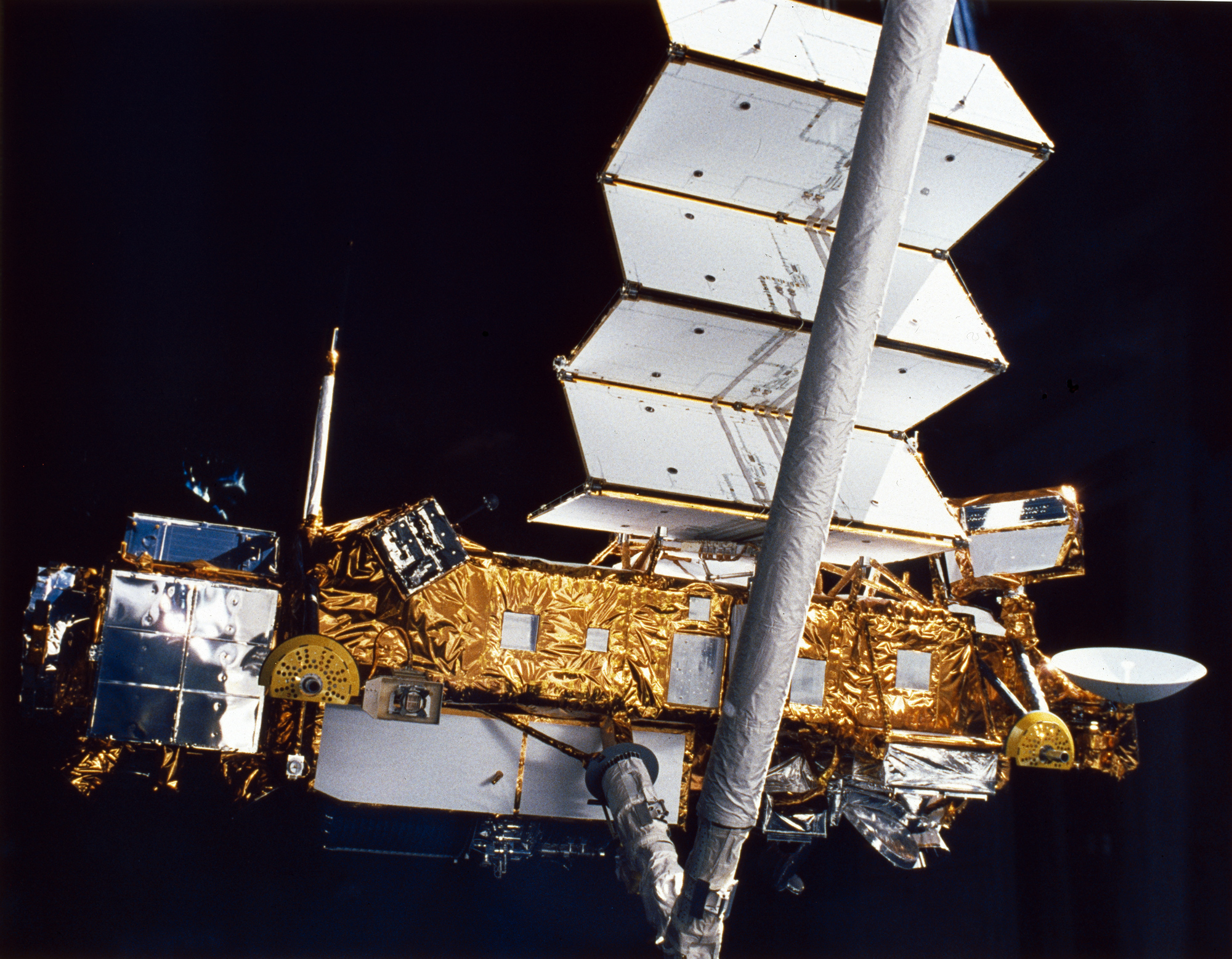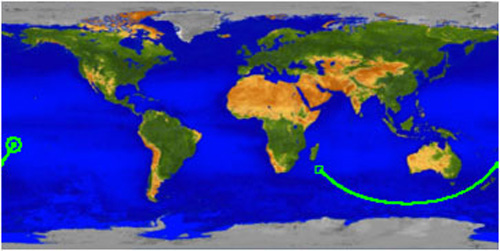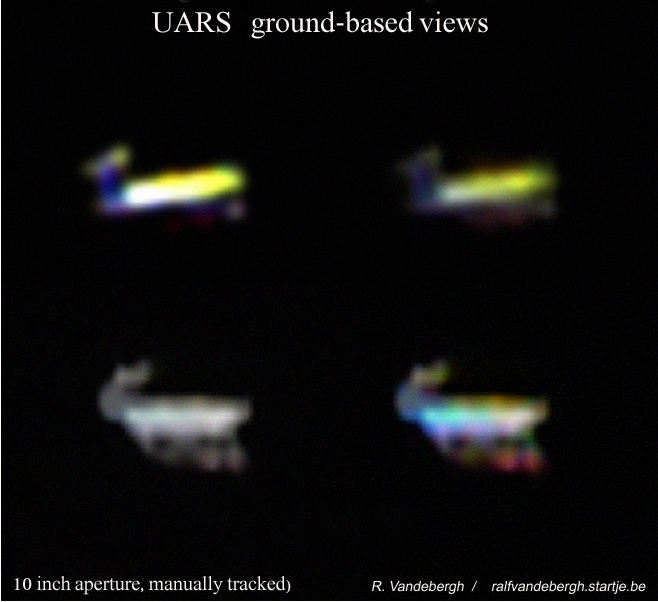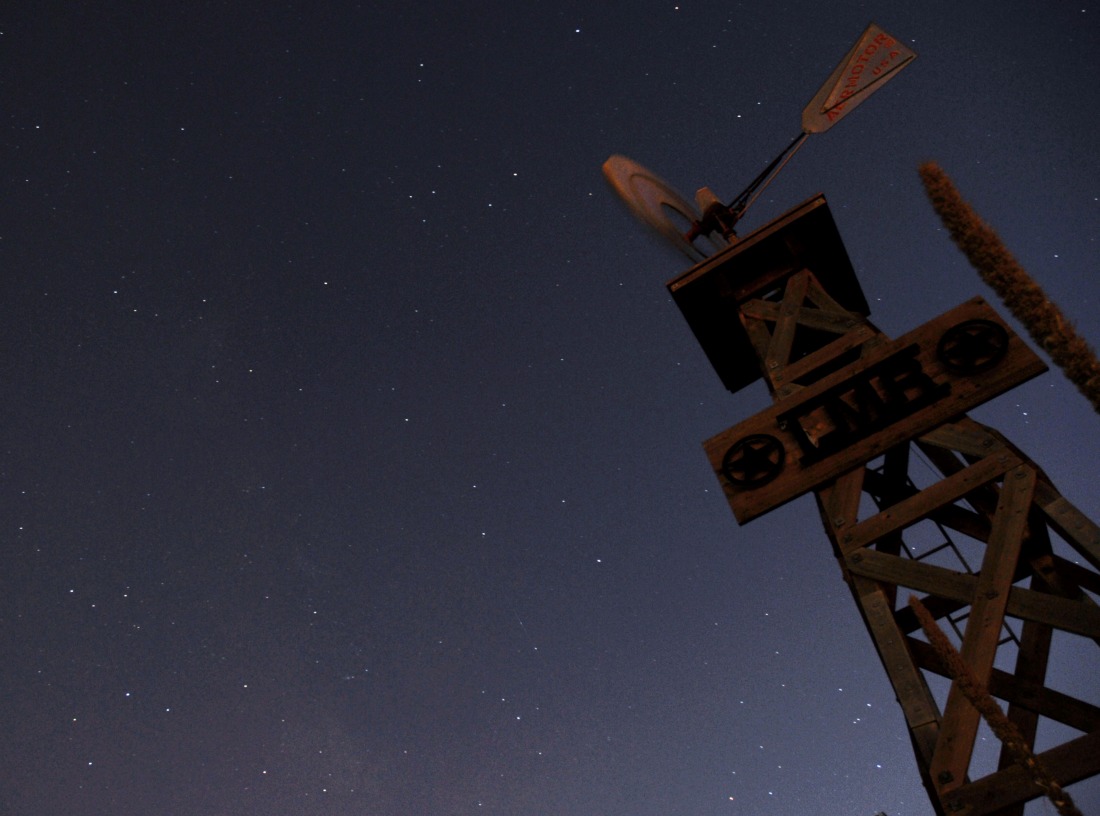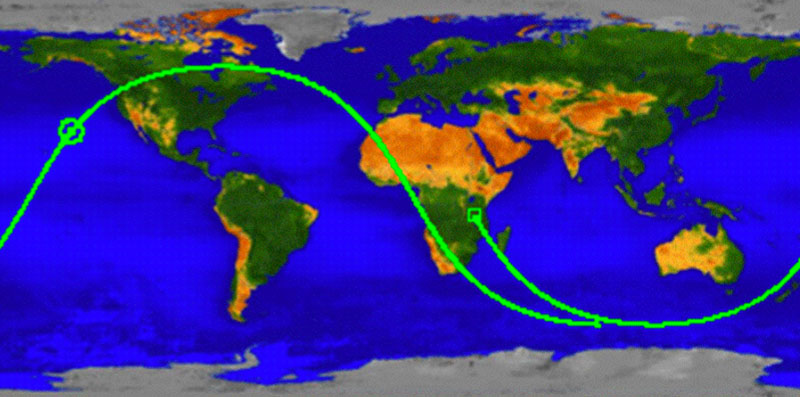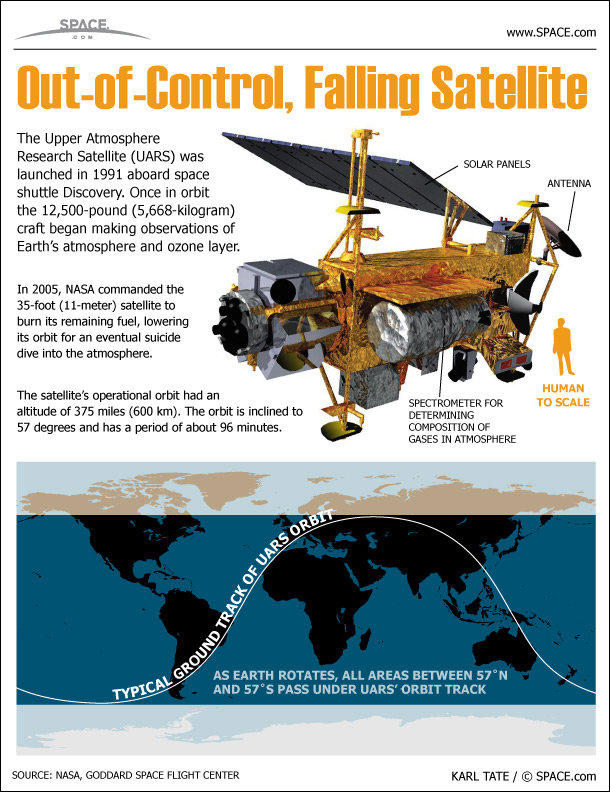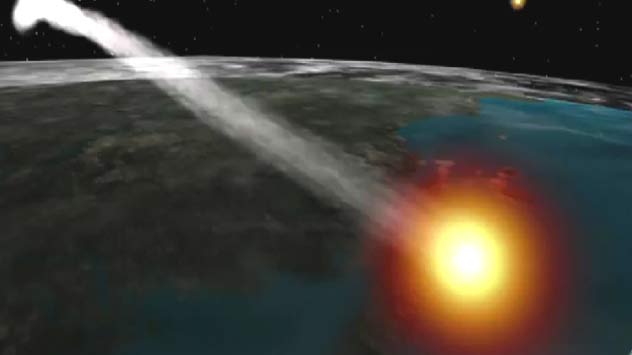Photos of NASA's Huge Falling Satellite UARS
Upper Atmosphere Research Satellite Deployment
The Upper Atmosphere Research Satellite hangs in the grasp of the Remote Manipulator System against the blackness of space during deployment from Space Shuttle Discovery, September 1991.
RIP UARS: Final Ocean Grave of NASA Satellite
This map shows the ground track for UARS beginning in the Indian Ocean off the coast of Africa at 0330 GMT and ending at atmospheric interface over the Pacific Ocean at 0401 GMT. In this map, UARS' path is shown beginning in the Indian Ocean off the coast of Africa at 0330 GMT and ending at atmospheric interface over the Pacific Ocean at 0401 GMT.
Ralf Vandebergh's Ground-Based Views of Tumbling UARS Spacecraft
Astrophotographer Ralf Vandebergh captured the UARS spacecraft tumbling through space, and noted: "Through the clouds I was able to grab just enough frames for an image of UARS on Sept 17, in the week before the expected reentry. Note the striking yellow (golden) color of the elongated main body and some smaller detail with different colors. Due to the shift, (maximum 62 degrees altitude), the distance was still over 270 km."
Falling NASA Satellite UARS - Adrian New Skywatching
Skywatcher Adrian New captured this image of NASA's falling UARS satellite as it flew over San Antonio, Texas at 9:20 p.m. EDT on Friday, Sept. 23 (0120 Sept. 24 GMT).
Video Captures UARS Satellite Tumbling in Space
Thierry Legault is part of a network of skywatchers armed with sophisticated astronomical gear to monitor the whereabouts of spacecraft.
UARS Re-Entry Ground Track
The ground track of NASA's UARS re-entry shows where the defunct satellite was passing over just before it fell to Earth. The circle presents the most likely point of landing, which probably occured around 12:16 a.m. EDT (0416 GMT) on Sept. 24.
NASA's Falling UARS Satellite Explained (Infographic)
Get a snapshot view of NASA's Upper Atmosphere Research Satellite (UARS), which will fall to Earth in 2011, in this SPACE.com infographic.
Breaking space news, the latest updates on rocket launches, skywatching events and more!
NASA's UARS Satellite Plunging Through Earth's Atmosphere
NASA's Upper Atmosphere Research Satellite (UARS) is expected to plunge toward Earth on Friday (Sept. 23).
Recent Orbital History of UARS
This graph shows the orbital decay of the UARS satellite over time.
UARS in Grasp of Remote Manipulator System
The Upper Atmosphere Research Satellite hangs in the grasp of the Remote Manipulator System during deployment from Space Shuttle Discovery, September 1991.
NASA's UARS Satellite
NASA's UARS satellite, which was decomissioned in 2005, and is now on the verge of falling back to Earth.
Join our Space Forums to keep talking space on the latest missions, night sky and more! And if you have a news tip, correction or comment, let us know at: community@space.com.

Space.com is the premier source of space exploration, innovation and astronomy news, chronicling (and celebrating) humanity's ongoing expansion across the final frontier. Originally founded in 1999, Space.com is, and always has been, the passion of writers and editors who are space fans and also trained journalists. Our current news team consists of Editor-in-Chief Tariq Malik; Editor Hanneke Weitering, Senior Space Writer Mike Wall; Senior Writer Meghan Bartels; Senior Writer Chelsea Gohd, Senior Writer Tereza Pultarova and Staff Writer Alexander Cox, focusing on e-commerce. Senior Producer Steve Spaleta oversees our space videos, with Diana Whitcroft as our Social Media Editor.
